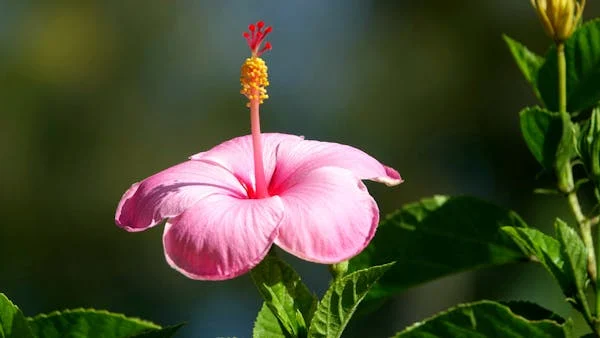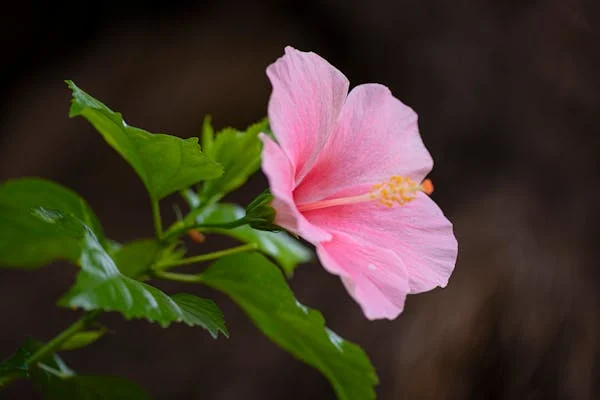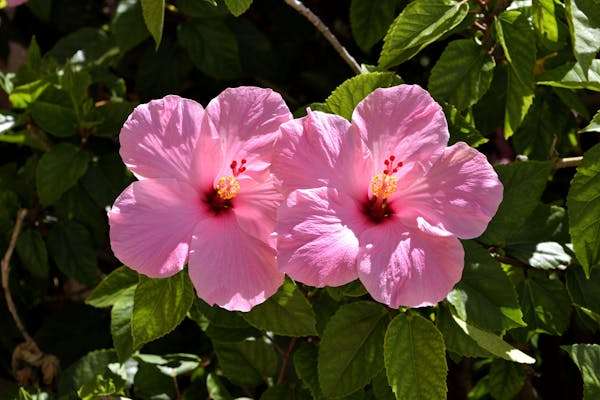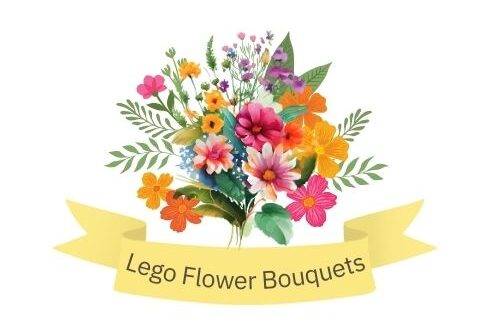The Korean people have chosen a meaningful symbol for their country that reflects its customs, culture, and stunning natural beauty. The Korean National Flower, known as the Rose of Sharon or Mugunghwa in Korean, holds significant cultural and historical importance. This article delves into the history, meaning, and symbolism of the national flower of South Korea and explains why the Mugunghwa is cherished as Korea’s most iconic floral emblem.

What is Korean National Flower
The national flower of Korea is the Mugunghwa, also called the Rose of Sharon. This South Korean national flower has been deeply rooted in Korean history for centuries. The flower’s origins date back to the Three Kingdoms period, and depictions of the Korean national flower can be traced to the 7th century. It gained particular prominence during the Goryeo dynasty (918–1392) and the Joseon dynasty (1392–1910), when it frequently appeared in art and culture.
After Korea gained independence in 1948, the Mugunghwa was officially declared the national flower of South Korea. This decision was meant to promote national pride and symbolize Korea’s resilience. Since then, the Korean national flower has become an enduring part of the country’s identity, appearing in official seals, government emblems, and cultural artifacts.
Mugunghwa Flower Meaning
The Mugunghwa, or Korean National Flower, holds profound symbolism in Korean culture. Its name, Mugunghwa, translates to “eternal flower” or “flower of eternity.” This flower meaning in Korean reflects the enduring spirit and determination of the Korean people. Just as the flower blooms consistently for months despite harsh conditions, it represents Korea’s ability to persevere through adversity.
The Mugunghwa flower meaning also symbolizes purity, beauty, and national pride. For centuries, it has been associated with resilience and hard work, reflecting Korea’s struggles and victories throughout history. The Korean national flower meaning resonates deeply in poems, folk songs, and traditional sayings, where it represents light, beauty, and the spirit of the Korean nation.

Features of the Korean National Flower
The Mugunghwa (scientific name: Hibiscus syriacus) belongs to the hibiscus family and is an herbaceous shrub that grows between 2 to 4 meters tall. The flowers of this Korean traditional flower are large, vibrant, and eye-catching, often measuring 6 to 12 centimeters in diameter. They come in various shades, including white, pink, purple, and blue, sometimes with darker centers that add to their visual appeal.
One of the unique features of the Korea national flower is its extended blooming period. The Mugunghwa blooms from summer to early autumn, providing continuous beauty for several months. This long blooming period has made the Mugunghwa a favorite in gardens and parks across South Korea, as well as in other parts of the world.
Korean Flower Symbolism in Culture
The Mugunghwa, or Rose of Sharon Korean National Flower, is deeply embedded in Korean culture and tradition. It symbolizes the resilience and spirit of the Korean people, who have endured hardships throughout their history but emerged stronger and more unified. The Korean flower symbol is used in various aspects of life, from art and literature to architecture and official emblems.
For example, the Korean national flower is featured prominently on South Korea’s presidential crest, banknotes, and passports. It also appears in Korean architecture, landmarks, and public spaces. Gifts bearing the image of the Mugunghwa are often presented to foreign dignitaries as a symbol of South Korea’s national pride and cultural heritage.

Conservation and Cultivation of the Mugunghwa
As the national flower in South Korea, the Mugunghwa holds a special place in conservation efforts. The South Korean government has implemented measures to protect the flower of South Korea and ensure its widespread cultivation. Wild populations of the Mugunghwa are monitored, and various programs are in place to preserve the species.
Botanists and horticulturists have also developed numerous cultivars of the Korean national flower, distinguished by their color, blossom shape, and growth patterns. These efforts have helped the Mugunghwa gain international recognition and popularity among garden enthusiasts worldwide.
Mugunghwa in Education and Research
The national flower of Korea is significant for research and education. In South Korean schools, students learn about the Mugunghwa meaning and its importance as the national flower of Korea. Scholars and researchers study the flower’s genetics, ecology, and potential medicinal uses. This research further solidifies the flower’s status as a national symbol.

Global Recognition of Korea’s National Flower
While the Mugunghwa is the national flower of South Korea, it is admired worldwide for its beauty and resilience. The Korean traditional flower thrives in various climates, including North America, Europe, and parts of Asia. Its widespread cultivation outside Korea has helped promote Korean culture and the significance of the Korean country flower on a global scale.
Conclusion
The Mugunghwa, or Rose of Sharon, is more than just the national flower of South Korea; it is a symbol of Korea’s spirit, history, and cultural pride. From its historical roots during the Three Kingdoms period to its modern-day status as South Korea’s national flower, the Mugunghwa continues to inspire and unite the Korean people. Whether featured in art, official emblems, or public spaces, this South Korean flower remains a timeless representation of Korea’s enduring beauty and resilience.
FAQs
Q: What is the national flower of South Korea?
A: The national flower of South Korea is the Mugunghwa, also known as the Rose of Sharon.
Q: What does the Mugunghwa symbolize in Korea?
A: The Mugunghwa symbolizes eternity, resilience, and the enduring spirit of the Korean people.
Q: Where can the Korean national flower be found?
A: The South Korea national flower can be seen in public parks, gardens, and along streets throughout South Korea. It is also widely cultivated in home gardens.
Q: Is the Korean national flower used for traditional purposes?
A: Yes, some parts of the Mugunghwa are used in Korean traditional medicine.
Q: What is the Korean flower language?
A: In Korean flower language, the Mugunghwa represents eternity, beauty, and resilience, reflecting its significance as the Korean national flower.
Related articles:
- Top 10 Mexican flower
- Best Herbs to Pair with Roses in a Flower Box
- Should I Buy Flowers For a Girl I Like?


